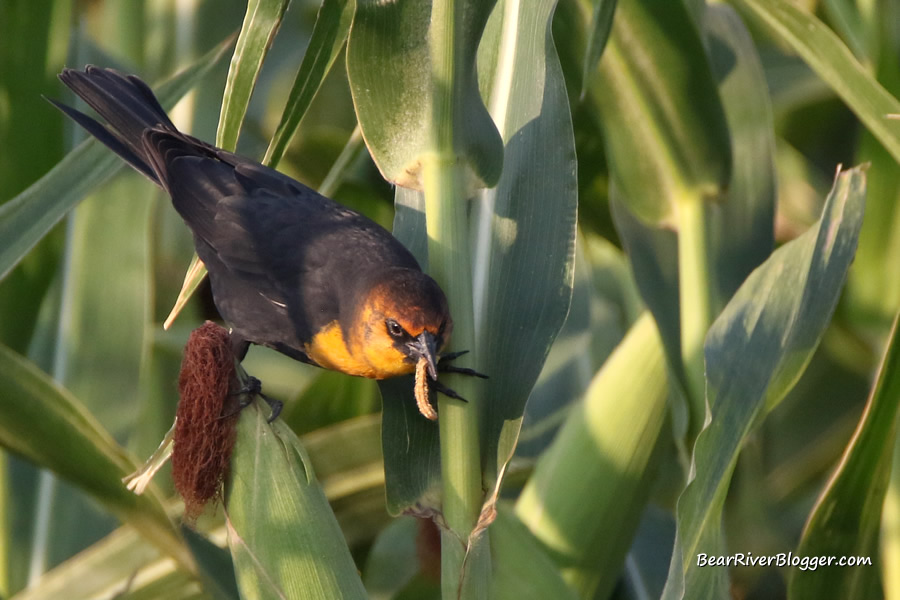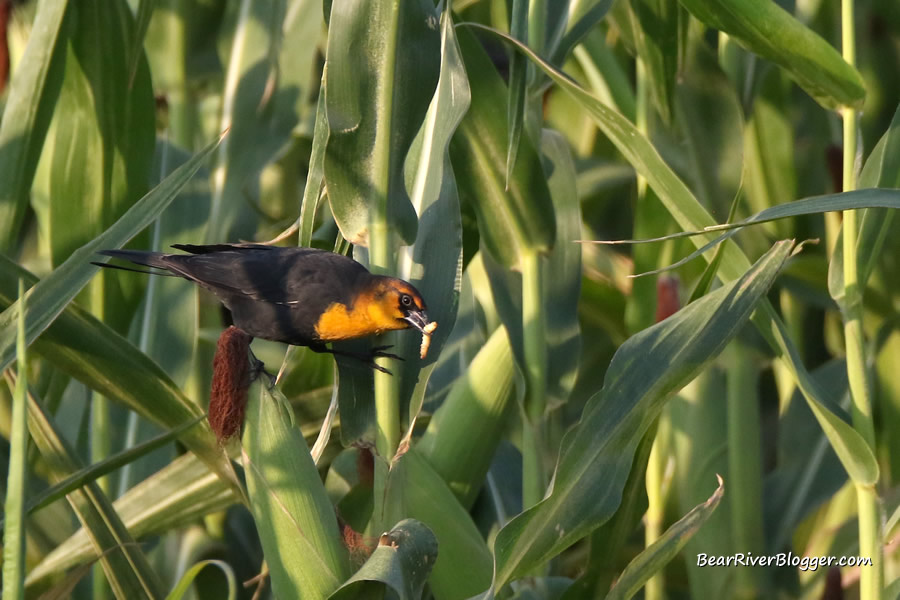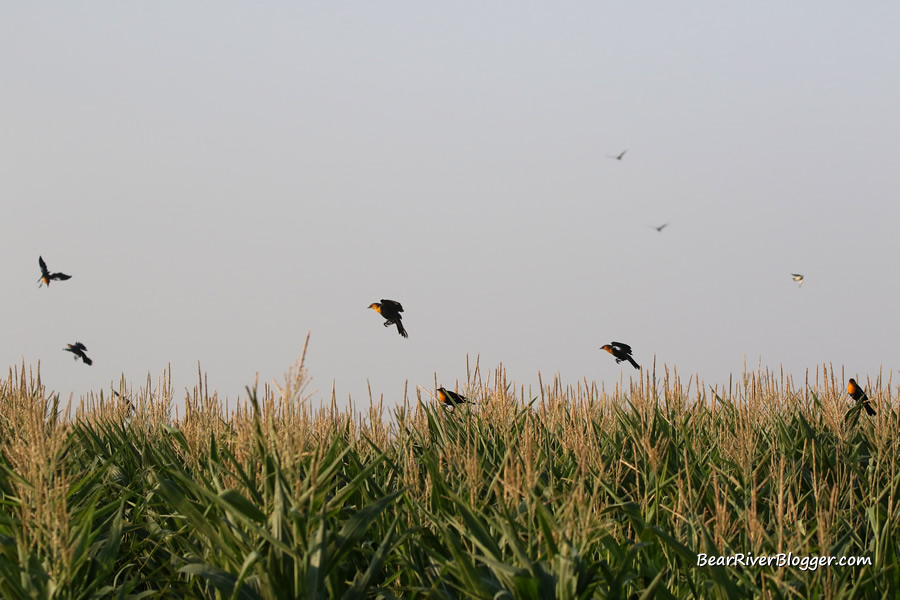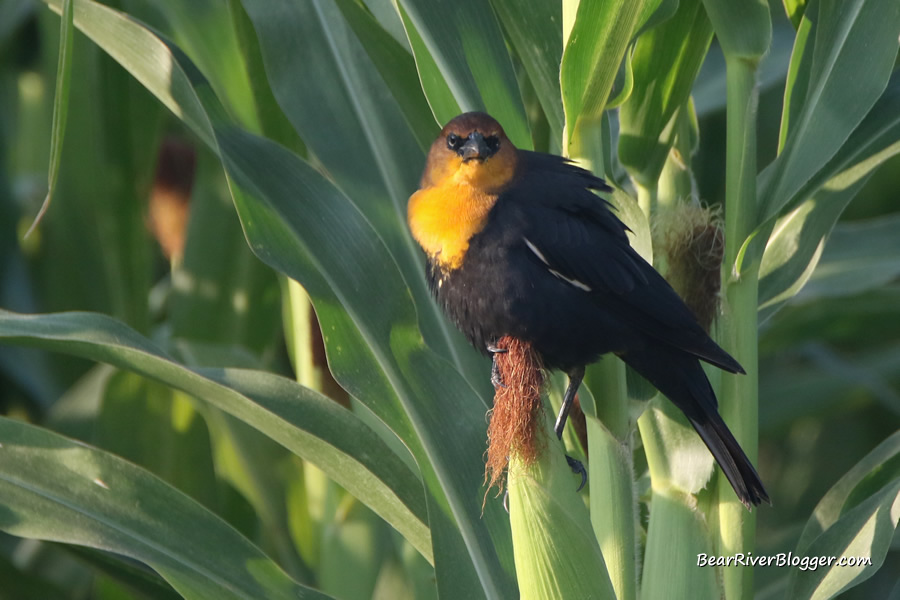Have you been birdwatching the past few weeks or so on a wetland in your neck of the woods, one similar to the famed Bear River Migratory Bird Refuge auto tour route, and noticed, well, how strangely silent the wetlands are right now?
I most certainly have and boy is it eerie quiet, to say the least.
In search of a new blog post idea, I ended up driving the bird refuge auto loop this morning, and, suffice it to say, with respect to how noisy the Bear River Migratory Bird Refuge usually is when the yellow-headed blackbird’s harsh and slightly off-key caterwauling fills the airways for the summer breeding season, this morning was nothing short of what I can only describe as dead silent.
(Calls Of The Yellow-headed Blackbird. For short nature clips like this one and interesting stories about the natural world around us, check out our Bear River Blogger channel on YouTube for videos and updates from our travels while out in nature, both on and off of the famed Bear River Migratory Bird Refuge.)
It’s probably safe to assume marshes all across the western United States, the Great Plain states, as well as portions of central Canada, regions where the yellow-headed blackbird migrates to for the summer breeding season, have also currently been laid calm in a similar fashion as fall migration for these very vocal birds is noticeably underway.
Here in northern Utah, August is when yellow-headed blackbirds abandon the wetlands of the Bear River Migratory Bird Refuge for the nearby corn fields so they can feed up before their long flight south to portions of Arizona, New Mexico, Texas, and northern Mexico where they spend the winter months.
But yellow-headed blackbirds don’t inundate the local agriculture fields to feed upon grain this time of year, rather they flock to local farms for another tasty treat that is found buried in the cornstalks themselves.
Needing a lot of protein for their growing chicks, yellow-headed blackbirds mainly feed upon a variety of insects during the summer months, including beetles, grasshoppers, dragonflies, and caterpillars, for example, and rely upon grain and weed seed for the bulk of their diet during the rest of the year.

In that same fashion of needing a good high-protein diet just before their long migration southward, corn earworms, or to be more precise the larvae of the Helicoverpa zea moth, are what the yellow-headed blackbirds are searching for and feeding upon in the large corn fields adjacent to the Bear River Migratory Bird Refuge for these few short weeks before migration beckons the call for them to take to the skies and make the long flight southward.
The yellow-headed blackbirds will earnestly pick at and dig in the ends of the corn cobs with their pointed beaks to find and pull out the corn earworms for a quick and easy meal.
Sometimes roving the corn fields in flocks of hundreds or more birds at a time, the yellow-headed blackbirds anxiously bounce from one patch of corn to another feeding on earworms each day until it is time to fly south for the winter months.
As I was almost home from my birdwatching trip this morning on the Bear River Migratory Bird Refuge auto tour route, I noticed the neighbor’s cornfield being inundated with hundreds upon hundreds of small, dark-colored birds.

Upon closer inspection I noticed it was a large flock of yellow-headed blackbirds, easily several hundred birds or more, that was flooding my neighbor’s cornfield.
Luckily, I still had my camera ready to go so I was able to capture a few images of the blackbirds actually feeding on the corn earworms.
I had heard blackbirds would come and pick out some kind of worm from the corn cobs just before migration but it wasn’t until today when I was able to photograph a couple blackbirds actually eating a corn earworm that I was able to see this feeding behavior first hand.
It’s one reason why I never, ever put my camera away until I am actually home and parked in my driveway.
You just never know what you will see along the way while out birdwatching so I always make it a rule to keep the camera at the ready when out chasing birds for this website.
If you are an avid birdwatcher like me or just a lover of all things in nature, I offer you to head on over to our subscribe page and sign up for email notifications for future blog posts where we photograph and write about nature, both on and off of the famed Bear River Migratory Bird Refuge.









